493. Once again. If we should use the
ancient time-frame of Bharani, then it ought to be necessary
to count with the date for spring equinox which had
been
used before the Pope Gregory XIII changed it, viz.
with day 84.
However, it was explicitly stated that the solstice
was in 21 December - not at 25 December which would
have been in harmony with the Julian equinox day for
spring equinox. So 21 December in the year 1778
should
probably be understood as December 21 in the Gregorian calendar.
... Cook's first visit, to Kaua'i
Island in January 1778, fell within
the traditional months of the New
Year rite (Makahiki). He
returned to the Islands late in the
same year, very near the
recommencement of the Makahiki
ceremonies. Arriving now off
northern Maui, Cook proceeded to
make a grand circumnavigation of
Hawai'i Island in the prescribed
clockwise direction of Lono's yearly
procession, to land at the temple in
Kealakekua Bay where Lono begins and
ends his own circuit. The British
captain took his leave in early
February 1779, almost precisely on
the day the Makahiki ceremonies
closed. But on his way out to
Kahiki, the Resolution sprung a
mast, and Cook committed the ritual
fault of returning unexpectedly and
unintelligibly. The Great Navigator
was now hors catégorie, a
dangerous condition as Leach and
Douglas have taught us, and within a
few days he was really dead - though
certain priests of Lono did
afterward ask when he would come
back
...
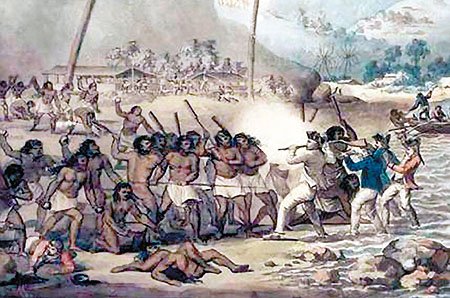
And, indeed, 26 years before 1778 the
Gregorian calendar had been adopted also by the
British:
... The reform was adopted initially
by the Catholic countries of Europe. Protestants and
Eastern Orthodox countries continued to use the
traditional Julian calendar and adopted the
Gregorian reform after a time, for the sake of
convenience in international trade. The last
European country to adopt the reform was Greece, as
late as 1923 ... Britain and the British Empire
(including the eastern part of what is now the
United States) adopted the Gregorian calendar in
1752, by which time it was necessary to correct by
11 days. Wednesday, 2 September 1752, was followed
by Thursday, 14 September 1752 ...
Therefore both 18 November and 21
December were probably according to the Gregorian
calendar. We can then conclude that the rule of adding 16
days to the true heliacal date of a star in order to
reach the day when the star became visible again should
be applied only to observations made in the
early mornings before Sun-rise. Observations of stars
at the horixon in the east done just after Sun-down were
presumably not as difficult because then the Sun was at the back
side and not in front of the observer.
... The correspondence between the
winter solstice and the kali'i
rite of the Makahiki is
arrived at as follows: ideally, the
second ceremony of 'breaking the
coconut', when the priests assemble
at the temple to spot the rising of
the Pleiades, coincides with the
full moon (Hua tapu) of the
twelfth lunar month (Welehu). In
the latter eighteenth century, the
Pleiades appear at sunset on 18
November. Ten days later (28
November), the Lono effigy
sets off on its circuit, which lasts
twenty-three days, thus bringing the
god back for the climactic battle
with the king on 21 December, the
solstice (= Hawaiian 16 Makali'i). The
correspondence is 'ideal' and only
rarely achieved, since it depends on
the coincidence of the full moon and
the crepuscular rising of the
Pleiades ...
In May 16 Alcyone was at the Sun but
not possible to observe. In November 14 the star was
close to the Full Moon and maybe the rays from the
descending Sun required an addition with 18 - 14 = 4
days in order to perceive her. Or pehaps an
addition with 3 days because of the difference
between the epoch of 1842 AD (my assumed time-frame for
rongorono) and 1778 AD (= 64 years).
|
te ua |
koia
ra |
kua
tuku ki to mata - ki
tona tukuga |
e
kiore - henua - pa rei |
|
Pa.
1. Mgv.:
pa, an inclosure, a
fenced place. Ta.: pa,
inclosure,
fortification. Mq.:
pa, inclosure. Sa.:
pa, a wall. Ma.:
pa, a fort. 2.
Mgv.: pa, to
touch. Sa.: pa'i,
id. Ma.: pa, id.
3. Mgv.: pa, to
prattle. Ta.:
hakapapa, to
recount. 4. Mq.: pa,
a hook in bonito
fishing. Sa.: pa,
a pearlshell fishhook.
Ma.: pa, a
fishhook. Pau.:
hakapa, to feel, to
touch. Mgv.: akapa,
to feel, to touch, to
handle cautiously.
|
 |
 |
 |
 |
|
Cb2-4 (420 = 7 * 60) |
Cb2-5 |
Cb2-6 (30) |
Cb2-7 |
|
CLOSE TO THE FULL MOON: |
|
May 14
δ Persei (54.7) |
15 (500 = 365 + 135)
Al Thurayya-27 (Many
Little Ones) /
Krittikā-3 (Nurses of
Kārttikeya) /
TAU-ONO (Six Stones)
ATIKS =
ο
Persei,
RANA (Frog) =
δ
Eridani
(55.1),
CELAENO (16 Tauri),
ELECTRA (17), TAYGETA
(19),
ν
Persei (55.3),
MAIA (20), ASTEROPE
(21), MEROPE (23)
(55.6) |
16 (136)
Hairy Head-18 (Cockerel)
/
Temennu-3 (Foundation
Stone)
ALCYONE
(56.1),
PLEIONE (28 Tauri),
ATLAS (27 Tauri)
(56.3) |
17
MENKHIB (Next to the
Pleiades =
ζ
Persei
(57.6)
PORRIMA (γ Virginis) |
|
'April 17 |
18 (108) |
19 (475 = 19 * 25) |
20 |
|
"April 3
|
4 |
5 |
6 (96) |
|
MARCH 11 |
12 (135 - 64 = 71) |
13 |
14 (→ π) |
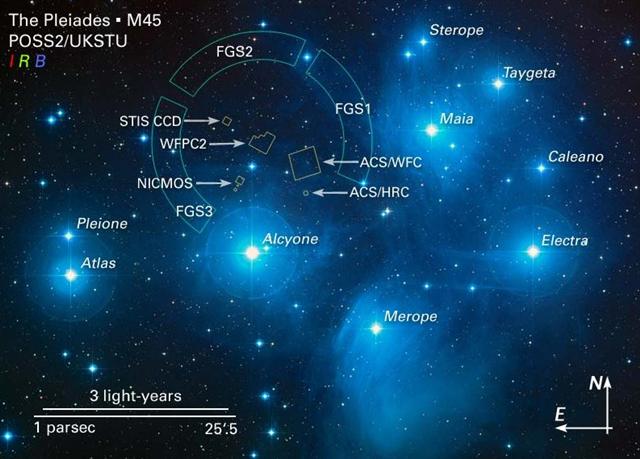 |
|
CLOSE TO THE SUN: |
|
Nov 13
κ
Librae (237.2),
ι
Serpentis (237.4),
ψ²
Lupi,
ρ
Oct.
(237.5), γ Cor.
Borealis, η Librae
(237.7),
COR
SERPENTIS = α Serpentis
(237.9)
*196.0 = *237.4 - *41.4 |
14
π
Cor. Borealis,
UNUK ELHAIA (Necks of
the Serpents) =
λ
Serpentis
(238.1),
CHOW =
β
Serpentis
(238.6) |
15
κ
Serpentis (239.3),
δ
Cor. Borealis,
TIĀNRŪ =
μ
Serpentis
(239.5),
χ
Lupi, (239.6),
ω
Serpentis (239.7),
BA (= Pa) =
ε
Serpentis,
χ
Herculis (239.8).
κ
Cor.
Borealis, ρ Serpentis
(239.9) |
16 (320)
λ
Librae (240.0),
β
Tr. Austr. (240.3),
κ
Tr. Austr. (240.4),
ρ
Scorpii (240.8)
*199.0 = *240.4 - *41.4 |
|
'Oct 17 |
18 |
19 (292 = 4 * 73) |
20 |
|
"Oct 3 |
4 (277) |
5 |
6 |
|
SEPT 10 |
11 |
12 (255 = 3 * 85) |
13 |
According to Metoro we should count (hia)
from a birth (hanau) when the Full Moon had
gone a day past Betelgeuze:
|
manu
rere |
tagata -
hanau
hia |
kiore
- henua |
 |
 |
 |
|
Cb3-13
(454) |
Cb3-14
(63 = 30
+ 33 =
59 + 4) |
Cb3-15
(348 -
62) |
|
CLOSE TO THE FULL
MOON: |
|
June 17
(84 + 84
= 336 -
168)
Ardra-6
(The
Moist
One) /
ANA-VARU-8
(Pillar
to sit
by)
χ¹
Orionis,
ξ
Aurigae
(88.1),
BETELGEUZE
=
α
Orionis
(88.3),
ξ
Columbae
(88.5),
σ
Columbae
(88.7)
ZUBEN
ELGENUBI
(α
Librae) |
18
η
Leporis
(89.0),
PRAJA-PĀTI
(Lord of
Created
Beings)
=
δ
Aurigae,
MENKALINAN
(Shoulder
of the
Rein-holder)
=
β
Aurigae,
MAHASHIM
(Wrist)
=
θ
Aurigae,
and
γ
Columbae
(89.3),
π
Aurigae
(89.4),
η
Columbae
(89.7)
*48.0 =
*89.4 -
*41.4 |
19
μ
Orionis
(90.3),
χ²
Orionis
(90.5) |
|
'May 21 |
22 (142
= 169 -
27) |
23 |
|
"May 7
(127) |
8 (2 *
64 = 169
- 41) |
9 |
|
APRIL 14
(104 =
168 -
64) |
15 |
16 |

... The earliest depiction that has been linked to the constellation of Orion is a prehistoric (Aurignacian) mammoth ivory carving found in a cave in the Ach valley in Germany in 1979. Archaeologists have estimated it to have been fashioned approximately 32,000 to 38,000 years ago ... The artist cut, smoothed and carved one side (A) and finely notched the other side (B) and the edges. Side A contains the half-relief of an anthropoidal figure, either human or a human-feline hybrid, known as the 'adorant' because its arms are raised as if in an act of worship.
| Egyptian jubilation |
 |
Phoenician he |
 |
Greek epsilon |
Ε (ε) |
|
Wikipedia points at the Egyptian gesture with arms held high as a Sign of jubilation, which may have been the origin (via Phoenician he) of epsilon.


|
On side B together with the four edges is a series of notches that are clearly set in an intentional pattern. The edges contain a total of 39 notches in groups of 6, 13, 7 and 13. A further 49 notches on side B are arranged in four vertical lines of 13, 10, 12 and 13 respectively plus a further notch that could be in either of the middle two lines ... The grouping of the notches on the plate suggests a time-related sequence. The total number of notches (88) not only coincides with the number of days in 3 lunations (88.5) but also approximately with the number of days when the star Betelgeuse (α Ori) disappeared from view each year between its heliacal set (about 14 days before the spring equinox around 33,000 BP) and its heliacal rise (approximately 19 days before the summer solstice).
Conversely, the nine-month period when Orion was visible in the sky approximately matched the duration of human pregnancy, and the timing of the heliacal rise in early summer would have facilitated a ‘rule of thumb’ whereby, by timing conception close to the reappearance of the constellation, it could be ensured that a birth would take place after the severe winter half-year, but leaving enough time for sufficient nutrition of the baby before the beginning of the next winter. There is a resemblance between the anthropoid on side A and the constellation Orion. None of these factors is convincing when taken in isolation, because of the high probability that apparently significant structural and numerical coincidences might have arisen fortuitously. However, taken together they suggest that the anthropoid represented an asterism equivalent to today’s constellation of Orion, and that the ivory plate as a whole related to a system of time reckoning linked to the moon and to human pregnancy. If so, then ethnographic comparisons would suggest that the Geißenklösterle culture related their ‘anthropoid’ asterism to perceived cycles of cosmic power and fertility ...
|
|
CLOSE TO
THE SUN: |
|
Dec 17
RUKBALGETHI
GENUBI
(Bending
Claw) =
θ
Herculis
(271.1),
ξ
Herculis
(271.5),
ETAMIN
(Head) =
γ
Draconis,
ν
Herculis
(271.7),
ν
Ophiuchi
(271.8) |
18 (352
= 348 +
4)
Cat's
Eye =
NGC6543
Draconis
(272.2),
ζ
Serpentis
(272.4),
τ
Ophiuchi
(272.9)
*231.0 =
*272.4 -
*41.4 |
19
Winnowing
Basket-7
(Leopard)
18h
(273.4 =
232.0 +
41.4)
NASH
(Point)
=
γ
Sagittarii
|
|
'Nov 20 |
21 (325) |
22 |
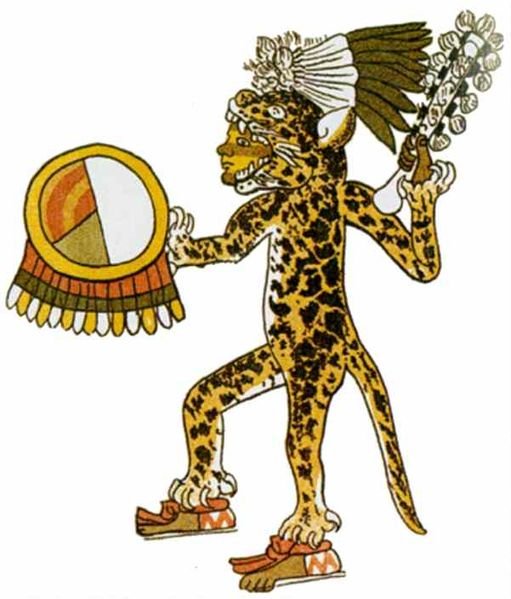 |
And then - 4 days after Betelgeuze -
the 'Sun Flower' was 'wilting' at the solstice in
December 21:
|
henua kua hoi |
kua ka te ahi o te
henua |
o
te henua kua hoi |
ko
te henua kua vero te
ahi |
kiore - henua |
 |
 |
 |
 |
 |
|
Cb3-16 |
Cb3-17 (66 = 30 +
36) |
Cb3-18 |
Cb3-19 (460 = 392 +
68) |
Cb3-20 |
|
CLOSE TO THE FULL
MOON: |
|
June 20
6h (91.3)
ν
Orionis (91.4),
θ
Columbae (91.5),
π
Columbae (91.6)
*50.0 = *91.4 -
*41.4 |
Solstice
ξ Orionis (92.5) |
22
Al Han'ah-4 (Brand)
/
Maru-sha-pu-u-mash-mashu-7
(Front of the Mouth
of the Twins)
TEJAT PRIOR =
η
Gemini
(93.4),
γ
Monocerotis (93.5),
κ
Aurigae (93.6),
κ
Columbae (93.8)
*52.0 = *93.4 -
*41.4 |
23
FURUD = ζ Canis
Majoris
(94.9) |
24 (365 + 175 = 540)
Well-22 (Tapir) /
Arkū-sha-pu-u-mash-mashu-8
(Back of the
Mouth of the Twins)
δ
Columbae (95.2),
TEJAT POSTERIOR =
μ
Gemini,
MIRZAM (The Roarer)
=
β
Canis Majoris
(95.4),
CANOPUS (Canopy) =
α
Carinae
(95.6),
ε
Monocerotis (95.7),
ψ1
Aurigae (95.9)
*54.0 = *95.4 -
*41.4 |
|
'May 24 (12 * 12) |
25 |
26 (146 = 173 - 27) |
27 |
28 |
|
"April 30 (130) |
"May 1 |
2 |
3 |
4 |
|
APRIL 17 |
18 (108 = 172 - 64) |
19 |
20 |
21 |
 |
|
CLOSE TO THE SUN: |
|
Dec 20 (354 = 350 +
4)
Zhōngshān (274.0), π
Pavonis (274.6) |
Solstice
ι Pavonis (275.1),
POLIS = μ Sagittarii
(275.9)
MENKAR (α Ceti) |
22
η Sagittarii (276.9) |
Purva Ashadha-20
(Winnowing Basket) |
|
23
KAUS MEDIUS = δ
Sagittarii,
κ Lyrae (277.5),
TUNG HAE (Heavenly
Eastern Sea) = η
Serpentis
(277.7),
SHAOU PIH (Minor
Minister) = φ
Draconis
(277.8),
KWEI SHE = χ
Draconis
(277.9) |
24
φ
Oct. (278.1),
KAUS AUSTRALIS =
ε
Sagittarii
(278.3),
ξ
Pavonis (278.4),
AL ATHFAR (The
Talons of the
Falling Eagle) =
μ
Lyrae
(278.6)
*237.0 = *278.4 -
*41.4 |
|
'Nov 23 (354 - 27 =
327) |
24 |
25 (329 = 146 + 183) |
26 |
27 |
|
"Nov 9 (354 - 41 =
313) |
→ π |
11 |
12 |
13 |
|
OCT 17 |
18 (291 = 355 - 64) |
19 |
20 |
21 |

... As has already
been mentioned, the
Delphians worshipped
Dionysus once a year
as the new-born
child, Liknites,
'the Child in the
Harvest Basket',
which was a
shovel-shaped basket
of rush and osier
used as a harvest
basket, a cradle, a
manger, and a
winnowing-fan for
tossing the grain up
into the air against
the wind, to
separate it from the
chaff. The worship
of the Divine Child
was established in
Minoan Crete, its
most famous early
home in Europe. In
1903, on the site of
the temple of
Dictaean Zeues - the
Zeus who was yearly
born in Rhea's cave
at Dicte near
Cnossos, where
Pythagoras spent
'thrice nine
hallowed days' of
his initiation - was
found a Greek hymn
which seems to
preserve the
original Minoan
formula in which the
gypsum-powdered,
sword-dancing
Curetes, or tutors,
saluted the Child at
his birthday feast.
In it he is hailed
as 'the Cronian one'
who comes yearly to
Dicte mounted on a
sow and escorted by
a spirit-throng, and
begged for peace and
plenty as a reward
for their joyful
leaps
... |
The circuit of Lono took 23
days and counting 66 (Cb3-17) minus 23 results in 43 (Cb2-19) at
November 28 (corresponding to May 29 on Easter
Island):
|
manu
rere - toga |
manu |
toga |
ka tuu
te toga o te manu |
kua
tapu - no te manu |
|
Toga.
1. Winter
season. Two seasons used
to be distinguished in
ancient times: hora,
summer, and toga,
winter. 2. To lean
against somehing; to
hold something fast;
support, post supporting
the roof. 3. To throw
something with a sudden
movement. 4. To feed
oneself, to eat enough;
e-toga koe ana oho ki
te aga, eat well
first when you go to
work. Vanaga. 1. Winter.
P Pau., Mgv.: toga,
south. Mq.: tuatoka,
east wind. Ta.: toa,
south. 2. Column, prop;
togatoga, prop,
stay. Togariki,
northeast wind.
Churchill. Wooden
platform for a dead
chief: ka tuu i te
toga (Bb8-42), when
the wooden platform has
been erected. Barthel 2.
The expressions Tonga,
Kona, Toa
(Sam., Haw., Tah.), to
indicate the quarter of
an island or of the
wind, between the south
and west, and Tokelau,
Toerau, Koolau
(Sam., Haw., Tah.), to
indicate the opposite
directions from north to
east - expressions
universal throughout
Polynesia, and but
little modified by
subsequent local
circumstances - point
strongly to a former
habitat in lands where
the regular monsoons
prevailed.
Etymologically 'Tonga',
'Kona',
contracted from 'To-anga'
or 'Ko-ana',
signifies 'the setting',
seil. of the sun. 'Toke-lau',
of which the other forms
are merely dialectical
variations, signifies
'the cold, chilly sea'.
Fornander.
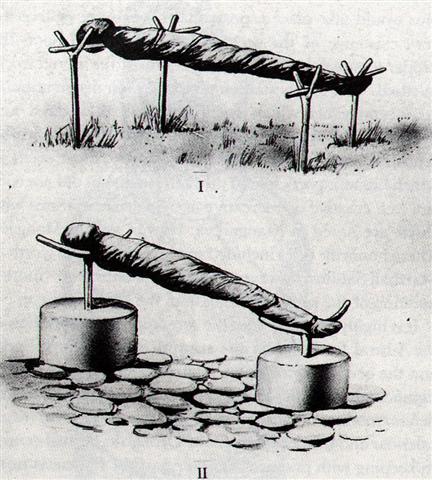 |
 |
 |
 |
 |
 |
|
Cb2-17 |
Cb2-18 |
Cb2-19 |
Cb2-20 (436) |
Cb2-21 |
|
CLOSE TO THE FULL
MOON: |
|
May 27
no star listed (67) |
28 (148)
Rohini-4 (The Red One) /
Pidnu-sha-Shame-4
(Furrow of Heaven)
/
ANA-MURI-2 (Rear pillar
- at the foot of which
was the place for
tattooing)
ALDEBARAN
= α Tauri
(68.2),
THEEMIN = υ² Eridani
(68.5) |
29 (356 + 149 = 514)
no star listed (69) |
30 (→ 5 * 30 = 150)
no star listed (70) |
31
TABIT =
π³
Orionis
(71.7),
π²
Orionis (71.9)
320 (South Pole star,
Dramasa) - 71 (Tabit) =
249 (Antares) |
|
'April 30 |
'May 1 (121 = 11 * 11) |
2 |
3 |
4 |
|
"April 16 |
17 (107 = 148 - 41) |
18 |
19 |
20 |
|
MARCH 24 |
25 (84 = 148 - 64) |
26 |
27 |
28 |
|
CLOSE TO THE SUN: |
|
Nov 26
γ Apodis (250.1), σ
Herculis (250.3), θ Tr.
Austr. (250.6), τ
Scorpii (250.7) |
27 (148 + 183)
HAN = ζ Ophiuchi
(251.0) |
28 (332)
ζ
Herculis,
η
Tr. Austr.
(252.1), η Herculis, β
Apodis (252.5) |
29 (150 + 183)
ATRIA = α Tr. Austr.
(253.9) |
30 (*254 = *71 + *183)
Tail-6 (Tiger)
WEI (Tail) = ε Scorpii,
η Arae (254.3),
DENEBAKRAB = μ Scorpii
(254.7) |
|
'Oct 30 |
31 |
'Nov 1 |
2 (306 = 333 - 27) |
3 |
|
"Oct 16 |
17 |
18 |
19 (292 = 333 - 41) |
20 |
|
SEPT 23 |
24 |
25 |
26 |
27 (270 = 334 - 64) |
|
ku
kikiu - i te henua |
koia ra |
tagata tua ivi - te
henua |
tagata tua ivi - ki
te henua |
|
Ivi.
1.
Bone; fishbone. 2.
Ivi-tia,
sewing needle. 3.
Ivi tika, spine,
vertebra. 4. Ivi
atua, being of
the other world. 5.
Ivi tumu atua,
seer, wizard. 6.
Ivi heheu
swordfish. Vanaga.
1. Bone, needle;
ivi ika,
fishbone; ivi
ohio, needle;
ivi tika,
fishbone, backbone;
kiko o te ivi
tika, pancreas;
ivi heheu,
cachalot; ivi
tupapaku,
skeleton; ivi uha,
to grow (of
mankind); tooa te
kiko e ivi i
hakarere, to
strip the flesh from
the bones; kai
ivi, to eat
remnants; kore te
ivi, cooked too
much. 2. Parent,
family, ancestry.
Churchill. To bend
down to allow
someone to climb on
one's back to be
carried (haha);
he-ti-atu a Kaiga
i te tua ivi,
he-haha-mai Huri
Avai, Kaiga bent
his back and Huri
Avai climbed on his
shoulders. Vanaga. |
 |
 |
 |
 |
|
Cb2-22 (46 = 30 +
16) |
Cb2-23 |
Cb2-24 |
Cb2-25 |
|
CLOSE TO THE FULL
MOON: |
|
June 1 (152 = 136 +
16)
π4
Orionis (72.1),
ο¹
Orionis (72.4),
π5
Orionis (72.8)
*31.0 = *72.4 -
*41.4 |
2
π¹
Orionis (73.0),
ο²
Orionis (73.4),
HASSALEH =
ι
Aurigae
(73.6),
π6
Orionis (73.9)
*32.0 = *73.4 -
*41.4 |
3
ALMAAZ (The Male
Goat) =
ε
Aurigae
(74.7),
HAEDUS I =
ζ
Aurigae
(74.8) |
4 (365 + 155 = 520)
HAEDUS II = η
Aurigae
(75.9) |
|
'May 5 (125 = 152 -
27) |
6 |
7 |
8 (2 * 64) |
|
"April 21 (111 = 152
- 41) |
22 |
23 |
24 |
|
MARCH 29 (88 = 152 -
64) |
30 |
31 |
APRIL 1 |
 |
|
CLOSE TO THE SUN: |
|
Dec 1
Ophiuchi (255.3),
GRAFIAS (Claws) =
ζ
Scorpii
(255.4)
*214.0 = *255.4 -
*41.4 |
2 (320 + 16 = 4 *
84)
κ
Ophiuchi (256.2),
ζ
Arae (256.5),
ε
Arae (256.8),
CUJAM
(Club) =
ε
Herculi
(256.9) |
3
no star listed (257) |
4
17h (258.7)
ARRAKIS = μ Draconis
(258.7) |
|
'Nov 4 |
5 |
6 (310 = 337 - 27) |
7 |
|
"Oct 21 |
22 (295 = 336 - 41) |
23 |
24 |
|
SEPT 28 |
29 (272 = 2 * 136) |
30 |
OCT 1 |
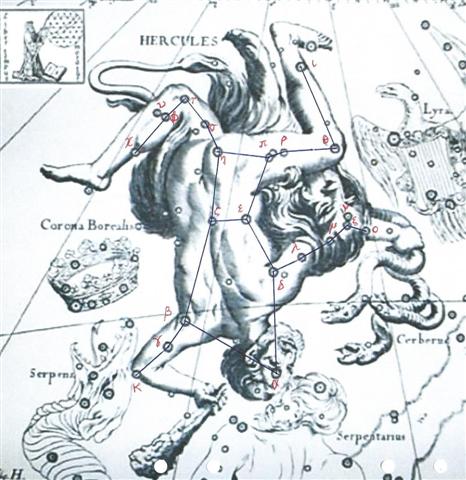 |
There were
168 days from Betelgeuze at
the handle of the club of
Orion to Cujam in Hercules
- at the right ascension
line of the handle of his
club as Hevelius has
illustrated it.
|
May 16 (137)
Pleiades Below |
185 |
Nov 19 (323 = 320 +
3)
Pleiades Above |
|
June 17
(168 = 2 * 84)
BETELGEUZE
"May 7
(127 =
168 - 41)
APRIL 14
(104 =
168 -
64) |
167 |
Dec 2 (336 = 295 + 41)
CUJAM
"Oct 22 (295 = 323 - 28)
SEPT 29 (272 = 323 - 51) |
168 + 18 =
186 = 180 + 6. And 2 * 180 =
360 = 4 * 90 could have been
a structure which
corresponded to 2 * 160 =
320 = 4 * 80.

The Mayas
used number 168 in order to
move ahead in the cycles of
time, we should remember:
.jpg)

At Pisces we
can here recognize the ancient
epsilon sign (Egyptian
jubilation) with hands
raised high as if in
jubilation or in mourning →
winnowing basket.
... The
sun at noon is the sun
declining; the creature
born is the creature
dying ...
In the idiom
of rongorongo
ε seems to have become the
viri type of glyph -
both signs having been
turned a quarter of a circle
towards the right,
presumably to illustrate how
precession had moved the
stars a quarter of a year
ahead in the calendar.
... The viri glyph
type is correlated with
number 29, which refers to
the 29th night of the moon,
when she no longer is
visible after having shone
for 28 nights. Viri
is also correlated with
major cardinal points,
especially with winter
solstice and the 'navel' (pito)
- presumably because those
are dark times ...
|
59 |
 |
520 |
 |
481 |
 |
270 |
 |
|
Ab1-1 |
Ab7-26 |
Aa5-7 |
Aa8-26 |
|
580 = 20 * 29 |
754 = 26 * 29 |
29 can be
explained as 365 - 4 * 84.
Viri.
1. To wind,
to coil, to roll up; he
viri i te hau, to wind,
coil a string (to fasten
something). 2. To fall from
a height, rolling over, to
hurl down, to fling down.
Viriviri, round,
spherical (said of small
objects). Viviri
te henua, to feel dizzy
(also: mimiro te henua).
Vanaga. To turn in a circle,
to clew up, to groom, to
twist, to dive from a
height, to roll (kaviri).
Hakaviri, crank, to
groom, to turn a wheel, to
revolve, to screw, to beat
down; kahu hakaviri,
shroud. Viriga,
rolling, danger. Viriviri,
ball, round, oval, bridge,
roll, summit, shroud, to
twist, to wheel round, to
wallow. Hakaviriviri,
to roll, to round; rima
hakaviriviri, stroke of
the flat, fisticuff. P Pau.:
viriviri, to brail,
to clew up; koviriviri,
twisting. Mgv.: viri,
to roll, to turn, to twist;
viviri, to fall to
the ground again and again
in a fight. Mq.: vii,
to slide, to roll, to fall
and roll. Ta.: viri,
to roll up, to clew up.
Viritopa, danger. Mgv.:
Viripogi, eyes heavy
with sleep. Mq.: viipoki,
swooning, vertigo.
Churchill. Viti: vili,
to pick up fallen fruit or
leaves ... In Viti
virimbai has the meaning
of putting up a fence (mbai
fence); viri does not
appear independently in this
use, but it is undoubtedly
homogenetic with Samoan
vili, which has a basic
meaning of going
around; virikoro then
signifies the
ring-fence-that-goes-about,
sc. the moon. In the Maori,
aokoro is the
cloud-fence ... Churchill 2.
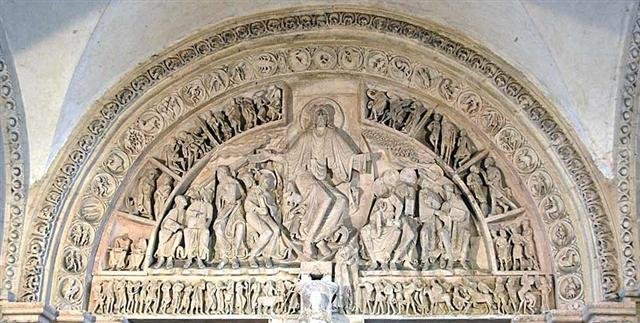
|































.jpg)

